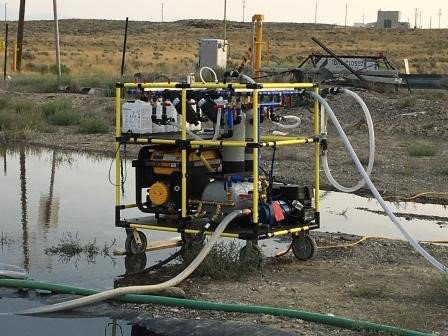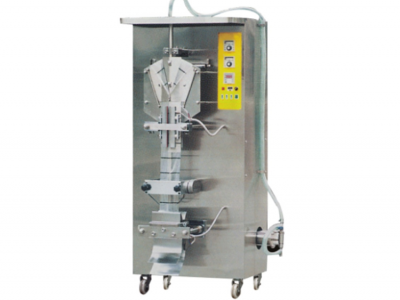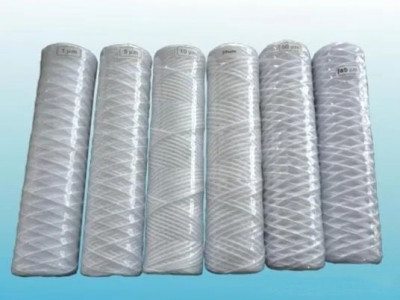Очистка воды играет решающую роль в усилиях по оказанию помощи при стихийных бедствиях. Когда происходят стихийные бедствия, доступ к чистой воде становится главным приоритетом для обеспечения здоровья и благополучия пострадавших сообществ. Важность очистки воды в таких ситуациях заключается в двух ключевых аспектах: обеспечении доступа к чистой воде и предотвращении распространения заболеваний, передающихся через воду.
В случае стихийных бедствий обычная инфраструктура обеспечения безопасной питьевой водой может оказаться под угрозой или полностью разрушена. Поэтому крайне важно иметь эффективные решения по очистке воды, которые можно быстро внедрить. Ограниченные ресурсы и инфраструктура создают серьезные проблемы, но портативные устройства для очистки воды предлагают практические решения.
Компактные и легкие очистительные устройства идеально подходят для оказания помощи при стихийных бедствиях. Системы на основе фильтров могут эффективно удалять примеси, такие как осадок, бактерии и простейшие, из источников воды. В этих устройствах используются различные методы фильтрации, такие как фильтры с активированным углем или керамические фильтры, для обеспечения безопасной питьевой воды.
Еще одним портативным решением является использование устройств для УФ-стерилизации. Эти устройства используют ультрафиолетовый свет для уничтожения вредных микроорганизмов, присутствующих в воде, что делает ее безопасной для потребления. УФ-стерилизация — это метод, не содержащий химикатов, который не изменяет вкус и запах очищенной воды.
Прежде чем приступить к процессу очистки, крайне важно оценить доступные источники воды. Реки и ручьи могут служить потенциальными источниками воды во время стихийных бедствий, если они не загрязнены загрязняющими веществами или мусором, вызванным самой катастрофой. Сбор дождевой воды является еще одним жизнеспособным вариантом, если имеются подходящие условия для хранения.
Процесс очистки воды в случае стихийных бедствий обычно включает в себя несколько этапов. Предварительная фильтрация необходима для удаления крупного мусора и отложений из источника воды перед дальнейшей очисткой. Фильтрация с помощью очистительных устройств эффективно удаляет более мелкие частицы и микроорганизмы, которые могут присутствовать в воде.
В некоторых случаях может потребоваться дополнительная обработка химическими дезинфицирующими средствами для обеспечения дополнительного уровня защиты от патогенов. Обычно используемые химические дезинфицирующие средства включают таблетки хлора или жидкий отбеливатель, которые можно добавлять в рекомендуемых дозировках.
Для обеспечения эффективной очистки воды жизненно важную роль играют обучение и образование. Сотрудники гуманитарных служб нуждаются в руководстве по надлежащим методам очистки воды, чтобы обеспечить последовательную и безопасную практику. Кроме того, просвещение пострадавших сообществ о важности очистки воды и предоставление им необходимых знаний дает им возможность взять под контроль собственное водоснабжение.
Совместные усилия имеют важное значение в очистке воды при стихийных бедствиях. Партнерство с НПО и государственными учреждениями позволяет обмениваться ресурсами, опытом и передовым опытом. Работая вместе, эти организации могут максимизировать свое воздействие и охватить большее количество пострадавших сообществ.
Мониторинг и оценка усилий по очистке воды имеют решающее значение для поддержания качества очищенной воды. Регулярное тестирование гарантирует эффективность используемых методов очистки и возможность оперативного внесения любых необходимых корректировок. Постоянное совершенствование является ключом к совершенствованию методов очистки для обеспечения безопасной питьевой воды во время стихийных бедствий.
Очистка воды при стихийных бедствиях имеет первостепенное значение для обеспечения доступа к чистой питьевой воде и предотвращения распространения болезней. Портативные решения, такие как системы на основе фильтров и устройства для УФ-стерилизации, предлагают эффективные способы очистки воды в сложных условиях. Оценка подходящих источников воды, соблюдение правильных мер по очистке, обеспечение обучения и обучения, сотрудничество с соответствующими организациями и усилия по мониторингу — все это важнейшие компоненты успешных инициатив по очистке воды при оказании помощи при стихийных бедствиях.




